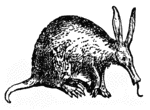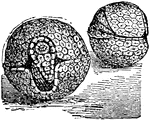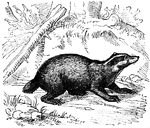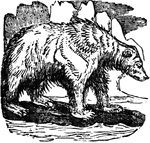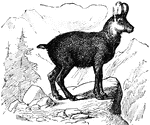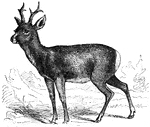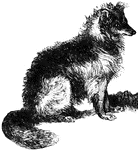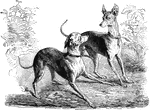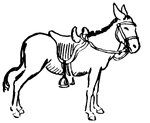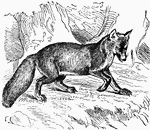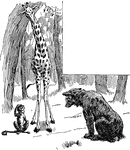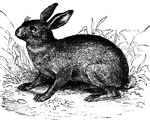
Aardvark
"Aard-vark is a burrowing insect-eating animal of the order Edentata found in South Africa. The name…
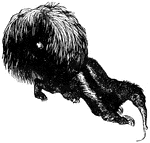
Crested Anteater
Anteaters are toothless four legged mammals. They have elongated heads and sticky tongues. It tears…

Red Ape
Monkey, a word loosely applied to apes, baboons, Old and New World monkeys, marmosets and lemurs.
Armadillo
The armadillos have scaly skin for protection; some have also the power of rolling themselves into a…

Six-banded armadillo
Armadillos live on carrion, insects and fruit. They are all small, except for the Gigantic armadillo…
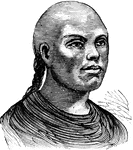
Asian
The chief characteristics of the Asian race are: broad head; angular face; high cheek-bones; small,…

Baboon
Monkey, a word loosely applied to apes, baboons, Old and New World monkeys, marmosets and lemurs.

Badger
Badgers have long, wide bodies with short legs. They are nocturnal, and eat earthworms, insects, vegetables…

Bat
The bat "never likes to rest upon the ground, and it takes its rest always by hanging itself up by the…
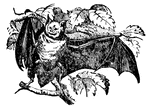
Horseshoe Bat
Bat, one of the group of wing-handed, flying mammals, having the forelimb peculiarly modified so as…
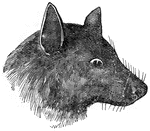
Kalong Bat
The kalong bat can have a wingspan up to five feet. Its head is like that of the fox, and it lives primarily…

Long-Eared Bat
The sense of hearing is acute in bats. They find prey by way of echolocation. The long-eared bat is…

Red Bat
Bats are chiefly ncturnal. The wing is a fold of skin supported by the arm and the elongated fingers.

Vampire Bat
The vampire bat of South America measures two or three feet from wingtip to wingtip. It lives by sucking…

Vampire Bat
Vampire bats have very large upper incisors. They suck the blood of cows and other livestock.
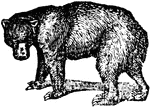
Black Bear
The Black bear inhabits every wooded district in North America, and eats primarily vegetation.
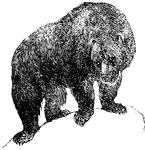
Grizzly Bear
The grizzly bear is the most fierce and powerful of the North American bears. It can weigh up to 800…
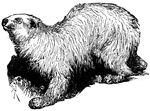
Polar Bear
A large white bear that lives in the Arctic regions of North America. They are powerful swimmers and…
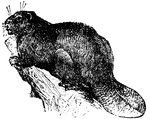
Beaver
The beaver is distinguished from all other rodents by its flat and scaly tail. Its hind feet are webbed,…
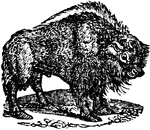
Bison
Immense herds of the bison occupy the vast plains. A single herd is said sometimes to consist of ten…
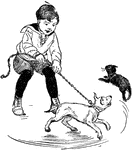
Boy Wrangling on a Leash Chasing a Cat
An illustration of a boy attempting to control a dog on a leash chasing a cat.

Capybara
The capybara is the largest member of the rodent family. Its shape is like that of the pig. Its feet…
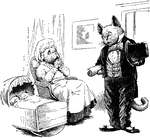
Mother & Father Cats Talking Near Baby Cats
An illustration of a mother and father cat talking near baby cats in a bassinet.

Caucasian
Caucasians typically have the lowest degree of projection of the alveolar bones which contain the teeth,…
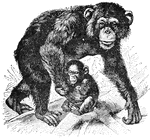
Chimpanzee
Monkey, a word loosely applied to apes, baboons, Old and New World monkeys, marmosets and lemurs.

Chimpanzee
The chimpanzee appears more like humans than any other animal and is found in the west part of Africa.…

Civet
There are several species of civet that live in Africa and Asia. All civets have scent-producing glands…
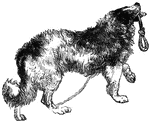
Stylized Dog
You see this dog dragging along a rope which he holds in his mouth, because he does not have hands (Hooker,…

Dugong
The dugong is closeley related to the manatee. It has no hind limbs, but its forelimbs are converted…

Brujin's Echidna Porcupine Anteater
A Bruijn's Echidna, or porcupine anteater from New Guinea. The animal have five claws and tapering tongue.…
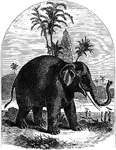
Elephant
Elephants are mammals, and the largest land animals alive today. The elephants gestation period is 22…
Elephant & Bear Holding Banner
A pictorial banner illustrated with a bear and elephant holding up a cloth banner.

Fox
The fox is characterized chiefly by its pointed muzzle, short legs and its bushy tail. During the day,…

Giraffe
Tall-necked mammal found only in Africa. They travel in herds and browse from the trees with their long…
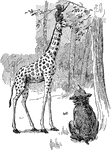
Giraffe Eating Leaves with a Monkey Sitting on Leaves
An illustration of a giraffe eating leaves with a monkey sitting on the giraffe's head.

Giraffe Looking at Bear Cub Near Carts
An illustration of a giraffe looking at a young bear cub attached to a chain.

Mountain Goat
The Rocky Mountain Goat inhabits the most lofty peaks of the Rocky Mountains, (Smiley, 1839).

Hamster
Hamsters are rodents. They are adapted for rapid and continuous gnawing, and they live chiefly upon…
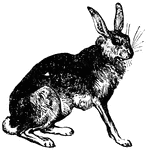
Hare
Hares are larger than rabbits, with longer ears and hind legs. They live above ground in nests. Hares…
